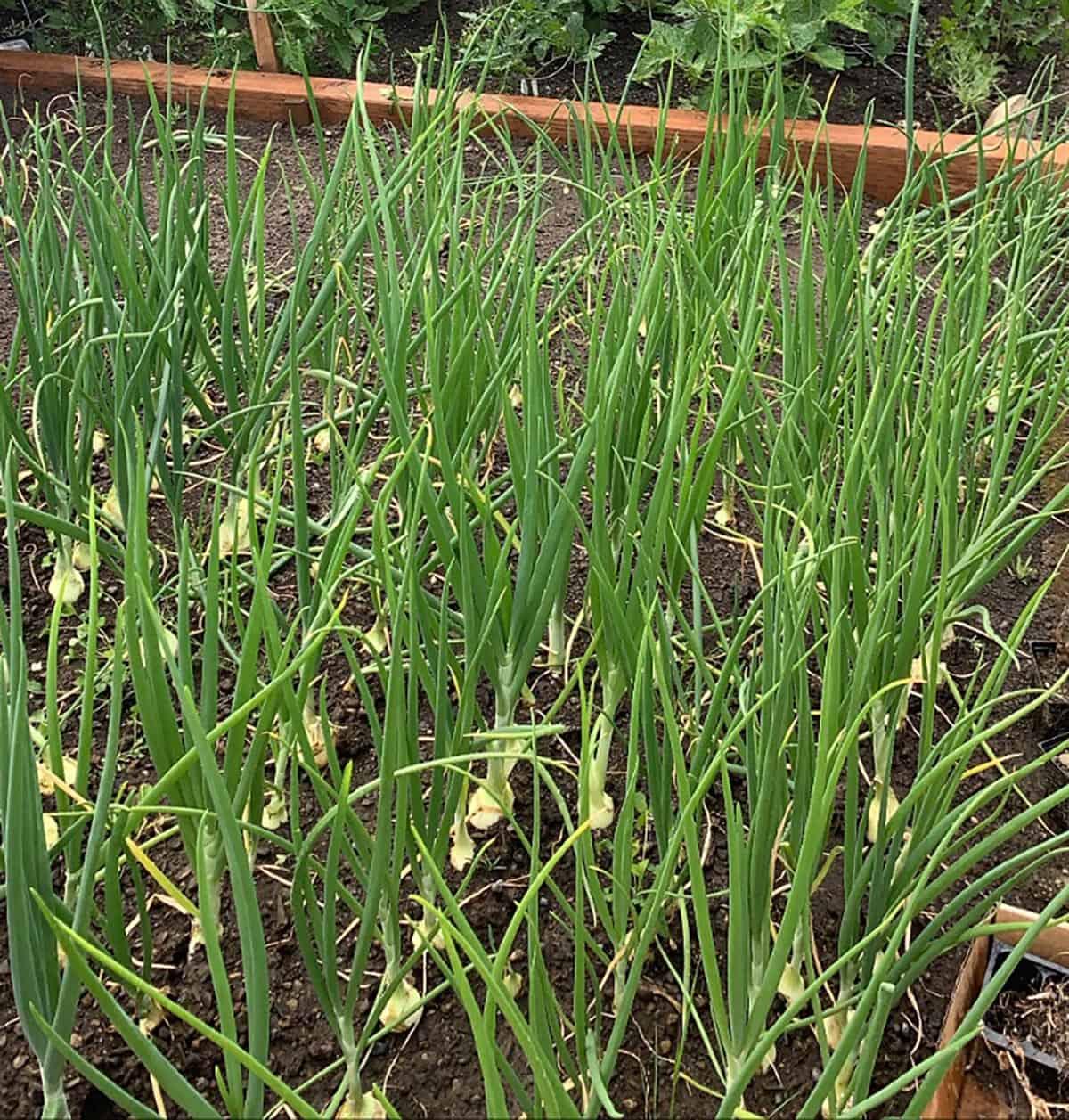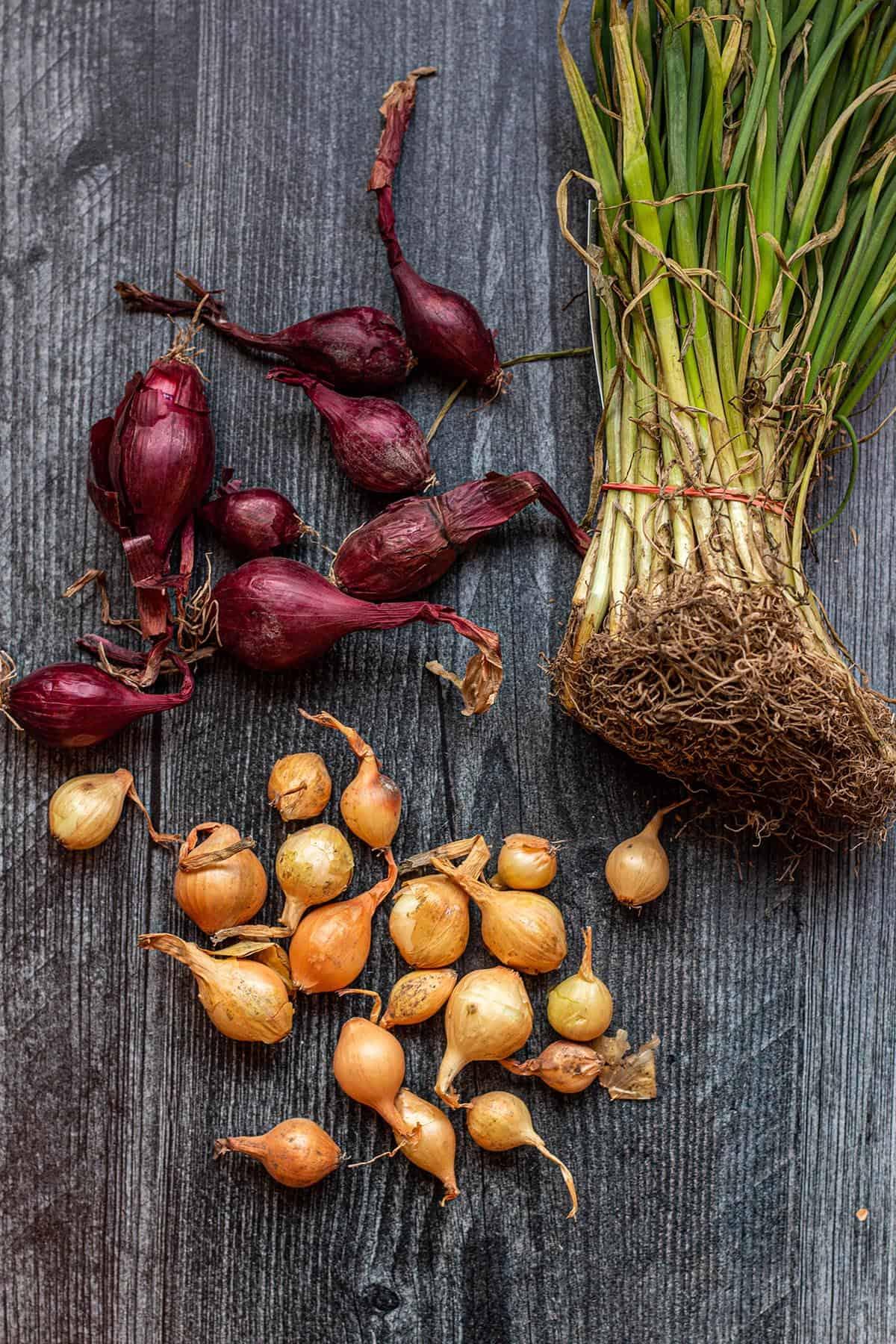Are you looking to add some homegrown goodness to your meals? Look no further than the humble onion. Growing onions in your backyard garden is a simple process that is suitable for both beginner and experienced gardeners. With their versatility, ease of cultivation, and long shelf life, onions are a must-have in any home garden.
Cooking with Onions
Before we dive into growing onions, let’s talk about cooking with them. With so many varieties to choose from, such as yellow, sweet, white, red, scallions, shallots, and pearls, it’s important to determine which types you use most frequently in your cooking.
Consider your preferred onion varieties and the dishes you typically prepare. For example, red onions are a great addition to summer grilling recipes and salads, while sweet and yellow onions are versatile and commonly used in many dishes. In my case, being a Washingtonian, I can’t resist the Walla Walla sweet onions, so those are the ones I focus on growing in my garden.
Types of Onions for Planting
When it comes to choosing onion varieties for your garden, keep in mind that there are three main types: Short-Day, Long-Day, and Neutral-Day onions. The type you select depends on your location and the amount of sunlight your garden receives during the summer.
- Short-Day Onions: Ideal for the Southern region, where there are 10-12 hours of summer daylight.
- Long-Day Onions: Best suited for the Northern region, where there are 14-16 hours of summer daylight.
- Neutral-Day Onions: Perfect for the Central region, with 12-14 hours of summer daylight.
If you purchase your onions from a local garden center, they should have the appropriate varieties for your area. However, if you order seeds from a company, like True Leaf Market, be sure to consider the day length for your region.
Sets, Seeds, and Seedlings
Now that you know which onions to grow, it’s time to decide how to get started. There are three options: sets, seeds, or seedlings (transplants).
For beginners, I recommend starting with seedlings. These are young onion plants that are ready for transplanting into your garden. They are cost-effective and have a shorter growing season compared to seeds.
If you have the time and space, growing onions from seeds is the most economical approach. However, it does require more time and patience. Starting from seeds will ensure that you have the largest onions, but they will take longer to grow.
Onion sets are small onion bulbs suitable for transplanting. They establish quickly and are easy to work with. However, they have a higher tendency to bolt and flower compared to seeds or seedlings.
What Do Onions Need to Grow?
Onions are hardy plants that can thrive in various conditions. To achieve the best results and develop large, healthy bulbs, there are a few requirements you need to fulfill:
Sun
Onions require a sunny spot in your garden with well-drained soil. Ideally, they should receive at least six hours of direct sunlight daily. When selecting a location, ensure it is free from shadows cast by buildings or other plants, and provides good air circulation.
Soil
Good soil drainage is crucial for onions. Loose, well-drained soil promotes healthy root development and prevents bulbs from rotting. Avoid compacted soil, as it hinders onion growth. Regularly removing weeds is also important, as they compete for nutrients and moisture.
Before planting, incorporate aged compost or organic matter like bone meal into the soil. Nitrogen-rich fertilizer can be applied weekly to support bulb size, but stop feeding once the onion emerges from the soil.
Water
Onions have shallow root systems, so they require regular watering. However, be cautious not to overwater, as onions dislike soggy soil. Well-drained soil is vital for their success.
How to Plant Onions
Onions are hardy plants that can withstand cold temperatures. Depending on your location, you can start planting onion seedlings in early spring and enjoy fully mature onions by mid-summer. Seeds can be started in the fall, before the last frost date, and will remain dormant until spring.
Onion seeds, sets, and seedlings will come with specific planting instructions, but here is a general guideline:
Planting Onion Seeds
Start onion seeds indoors 6-8 weeks before transplanting them outside. Follow the instructions on the seed packet for sowing. Once the seedlings are mature enough, follow the transplanting guide for seedlings.
Planting Onion Sets
Plant sets in a trench about 1″ deep, spacing them 4-5″ apart. The rows should be approximately 12″ apart. Place the small bulbs with the pointed end up, ensuring they are not planted too deep. The tops of the sets should be just below the soil surface.
Planting Onion Seedlings (Transplants)
Seedlings are onion plants that were started in the current growing season and are ready for transplantation. They are commonly sold in bundles and resemble green onions. Plant each seedling 4-5″ apart, with rows spaced 12″ apart. You can also plant them closer together (1-2″) and thin them out later for smaller onions throughout the season.
Another planting method involves creating holes about 1-2″ deep using your finger or a stick, dropping the seedling in, and filling the hole with dirt. Adding a layer of mulch around the bulbs after they start developing can help with water retention and weed control.
Once the bulbs begin to push out of the ground, avoid covering them with additional soil, and cease supplemental feedings. This is part of the natural growth process for onions.
How to Harvest, Cure, and Store
As your onions grow, the green tops will start to protrude from the ground, forming tall green stalks. Although you can harvest onions at any time during the growing season, they will signal when they have reached maturity.
Even in the early summer, seedlings can be harvested and used as green onions. Towards the end of the growing season, the green onion stalks will turn yellow and fall over. At this point, allow the onions to sit in the ground for a few more days to initiate the curing process.
Pull the mature onions gently from the ground, shaking off excess dirt. You can either hang them in a warm, dry spot or leave them in the garden beds to finish curing. It is crucial to harvest onions on a dry day to minimize additional moisture. Once the leaves around the onion start to shrivel and the outer skins of the bulb are dry, they are ready for storage.
Properly cured onions can last for months in a dry place. Ensure good air circulation to prevent moisture buildup. You can braid the dried-out stalks and hang them or use a mesh bag, similar to those used to store purchased onions. Avoid cardboard boxes, as they impede airflow and contribute to mold growth.
Regularly inspect your stored onions for any signs of rotting or sprouting. Remove any affected onions promptly to prevent spoilage.
Recipes and Cooking
Onions are a versatile ingredient that enhances countless recipes and cuisines. Whether you’re flavoring a soup, adding them to a taco, or enjoying them alongside steamed salmon, onions are a staple in every home cook’s pantry. A classic French Onion Soup is also a delightful way to showcase their delicious flavor.
So, are you ready to embark on your onion-growing journey? Let me know in the comments which varieties you’re most excited to grow. As for me, the Sweet Walla Wallas are an absolute must-have!
Other Gardening Resources:
- [Link 1]
- [Link 2]
- [Link 3]




